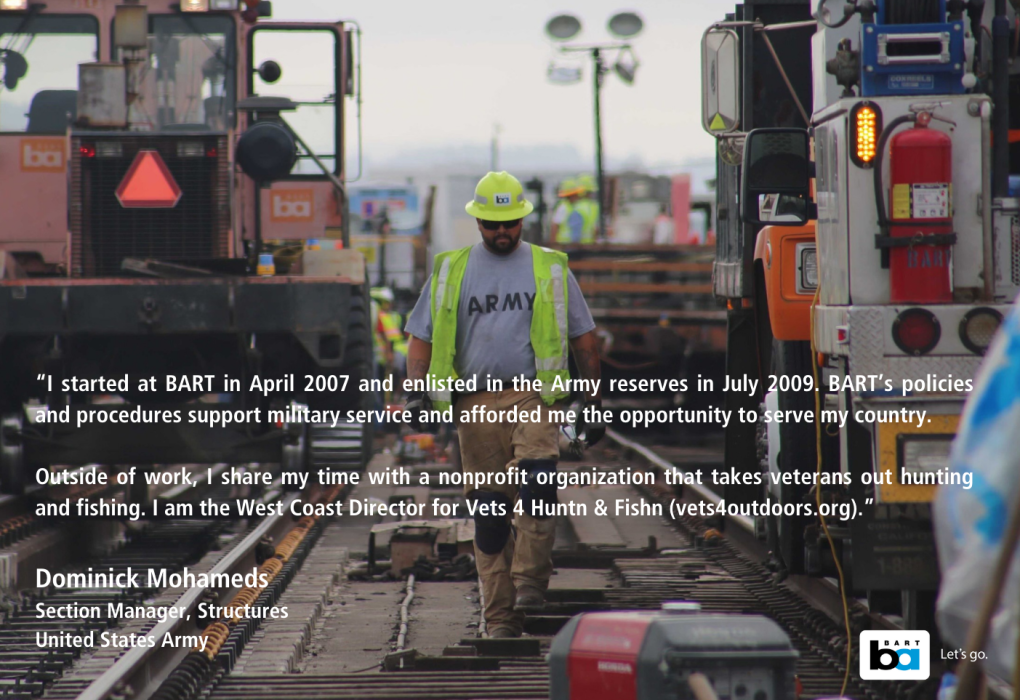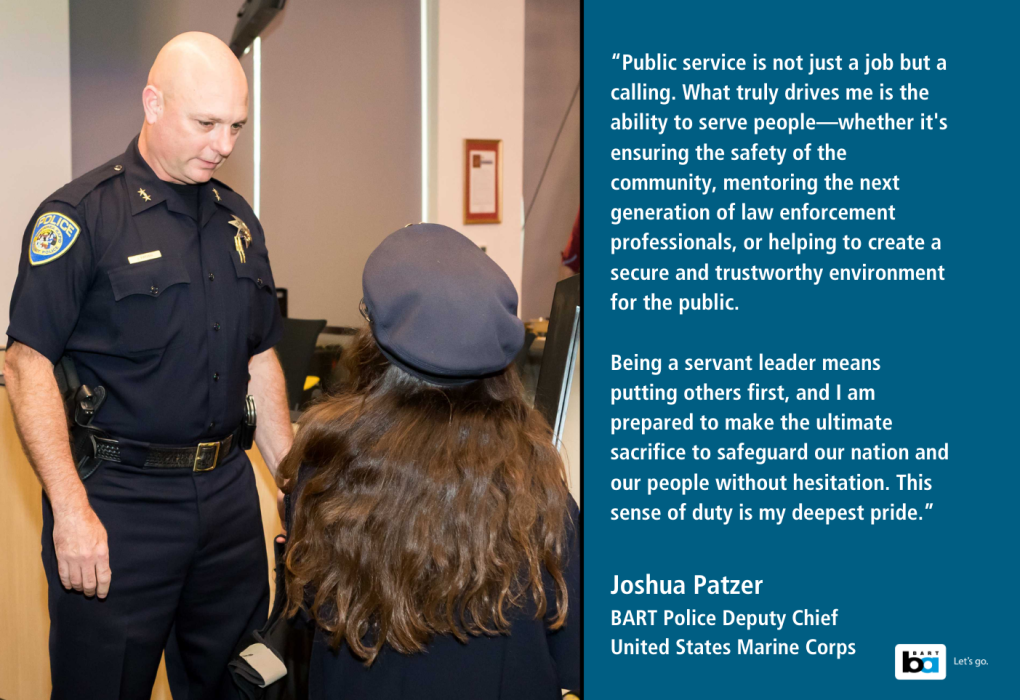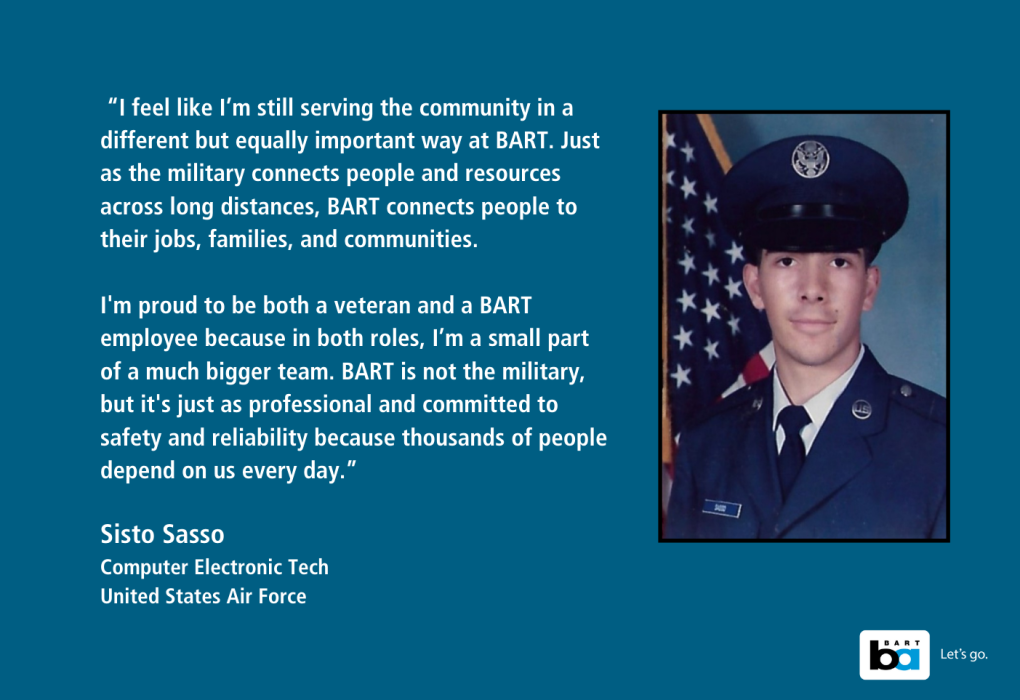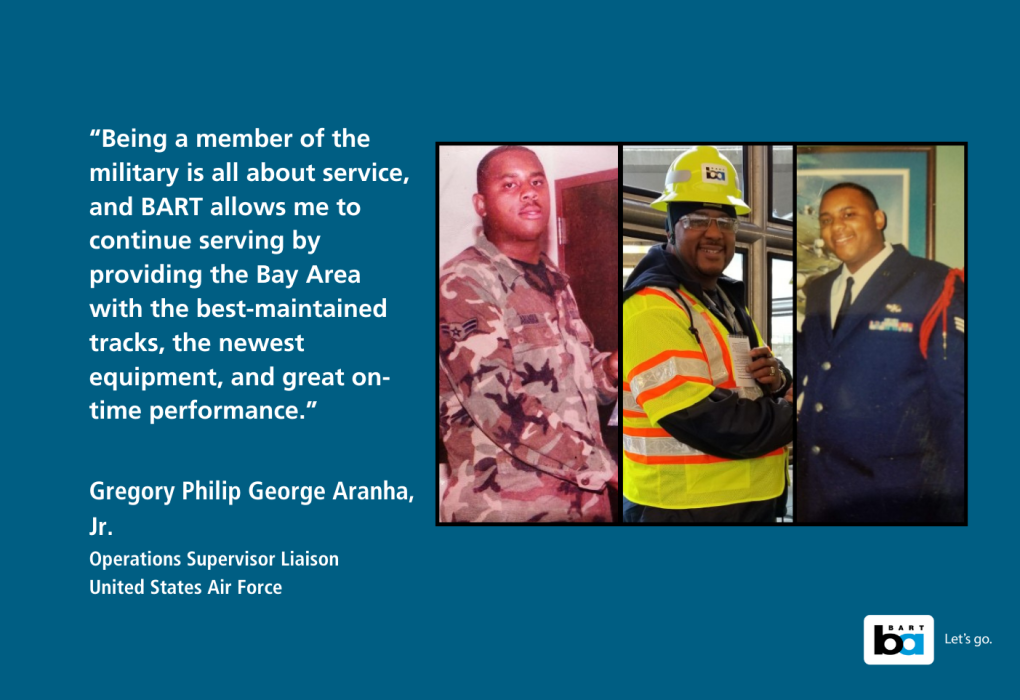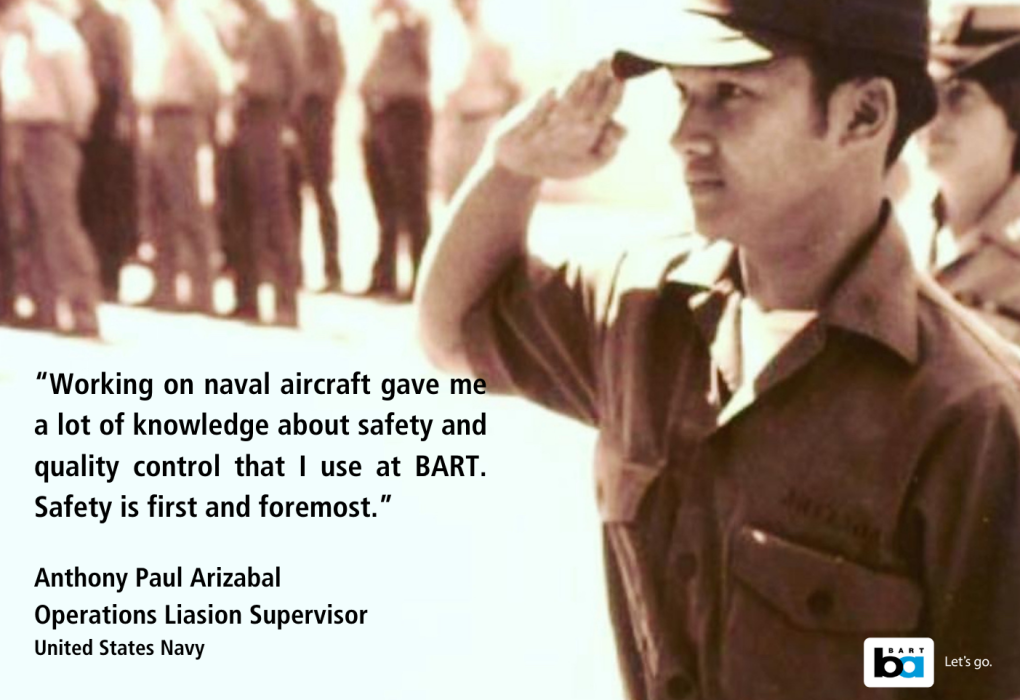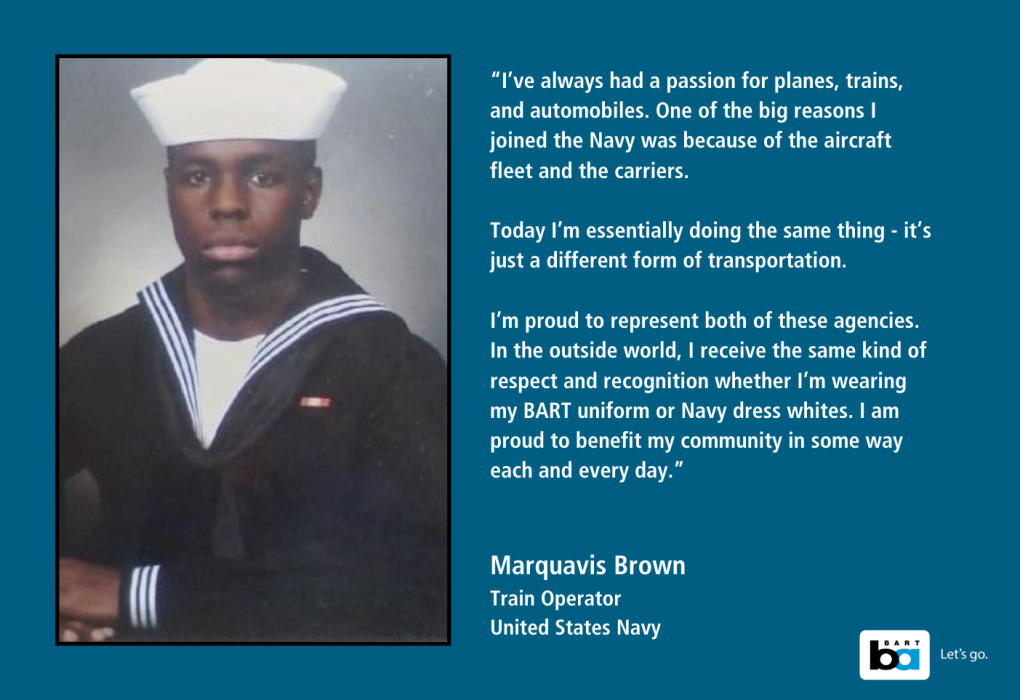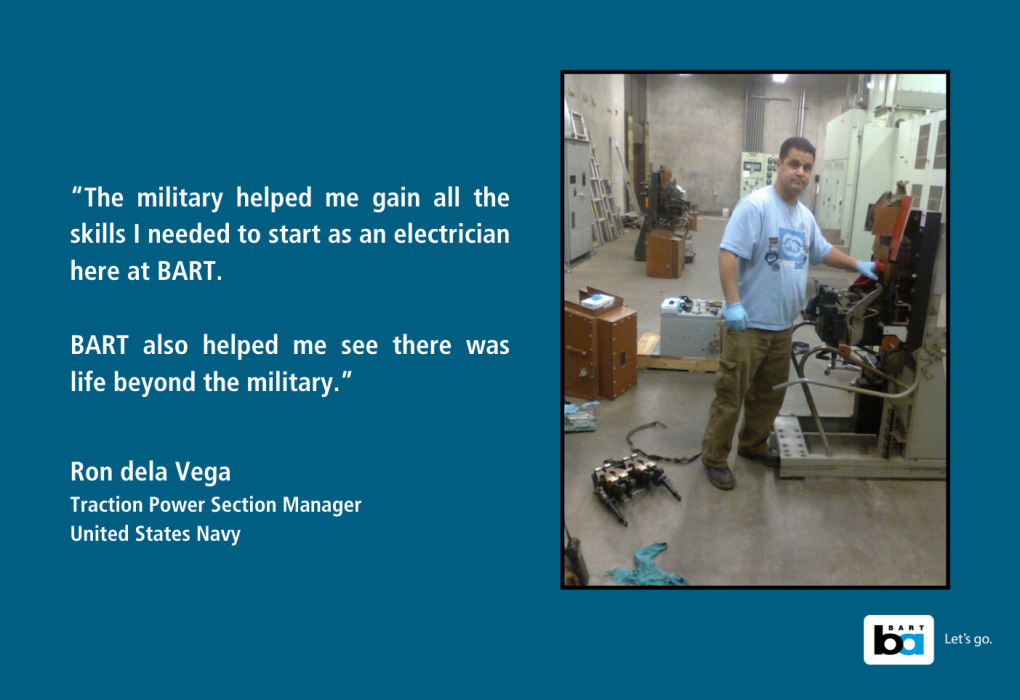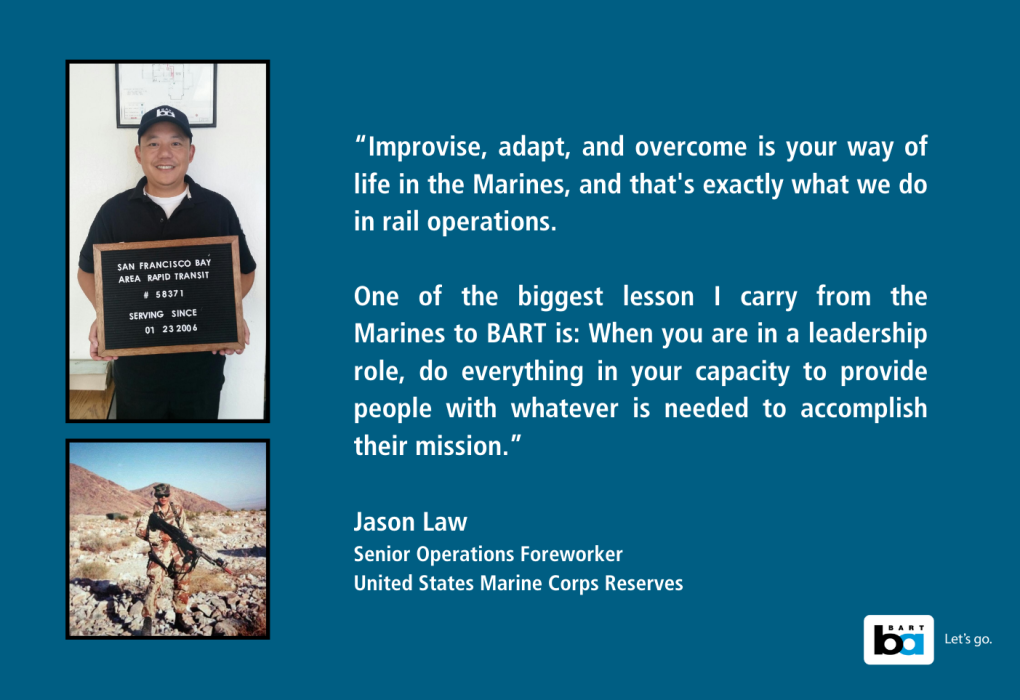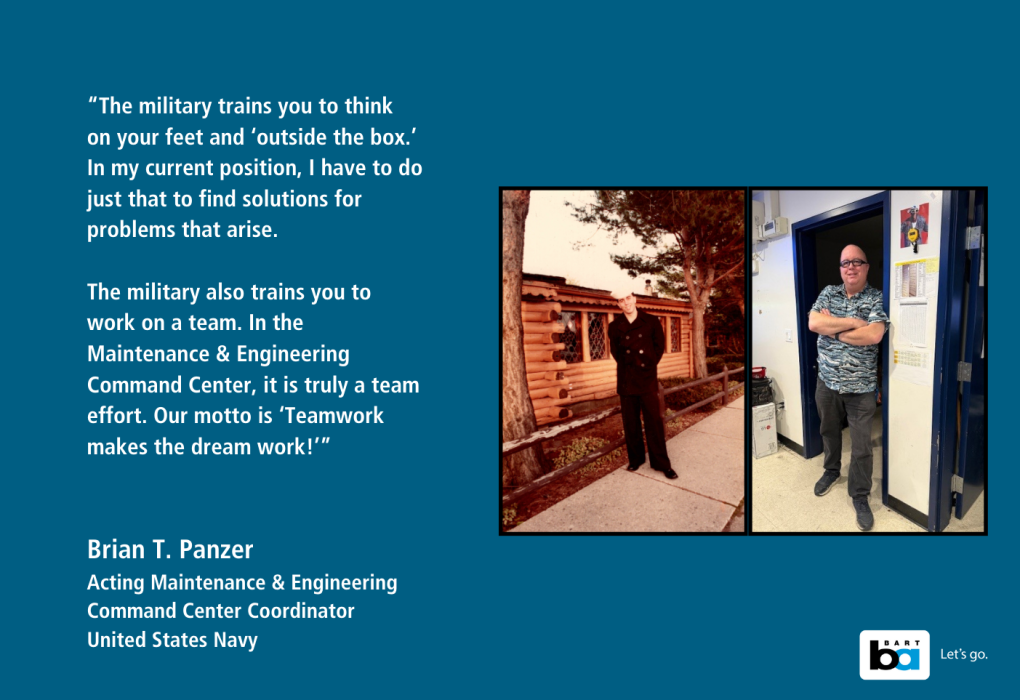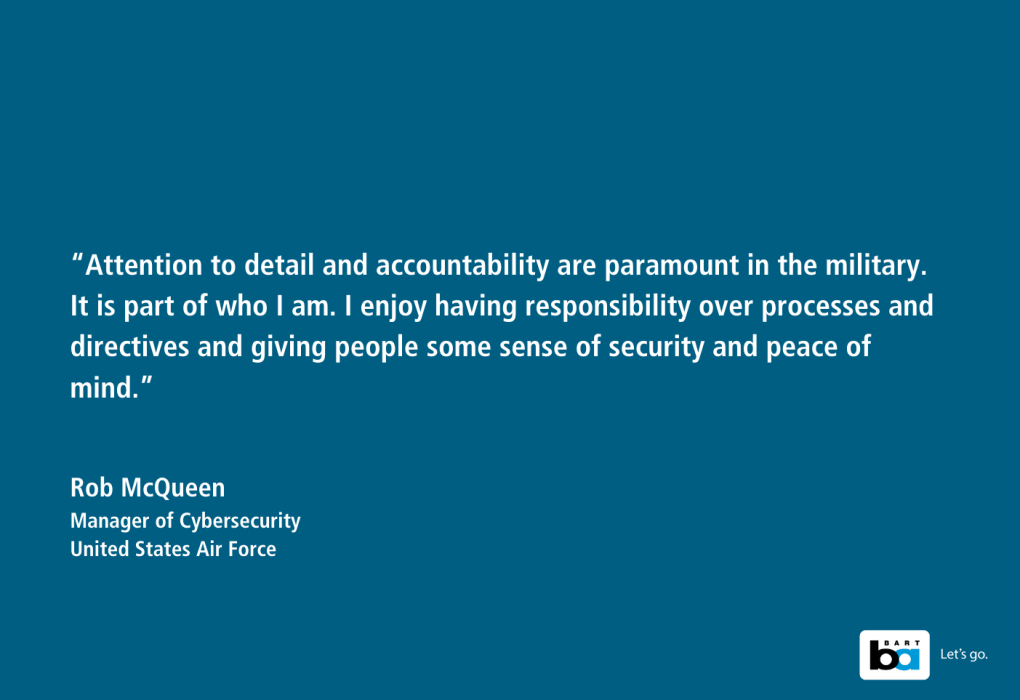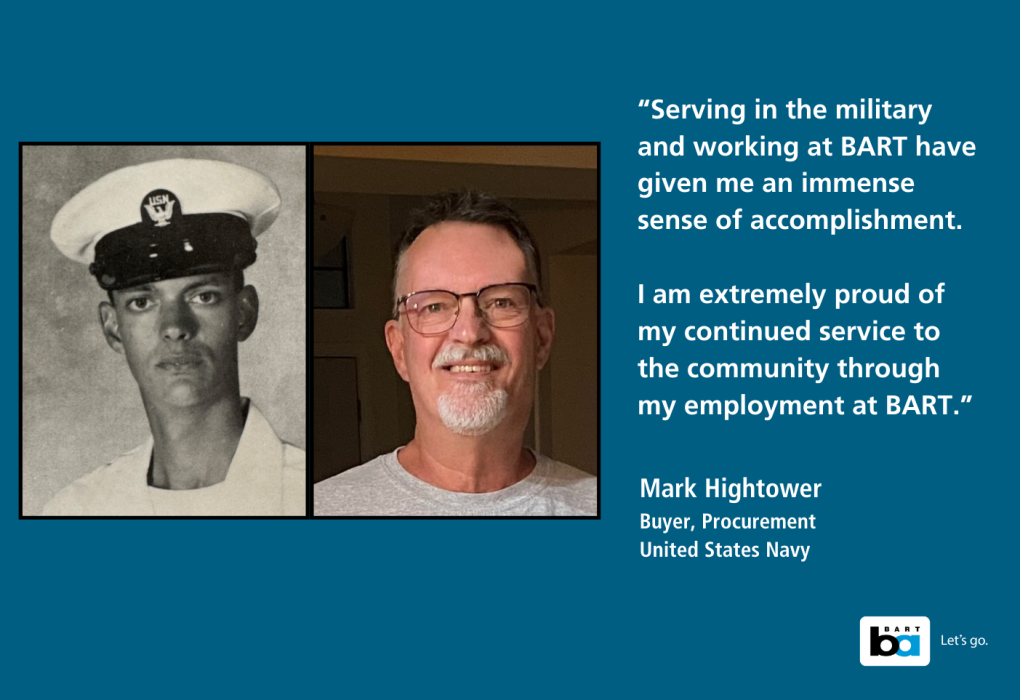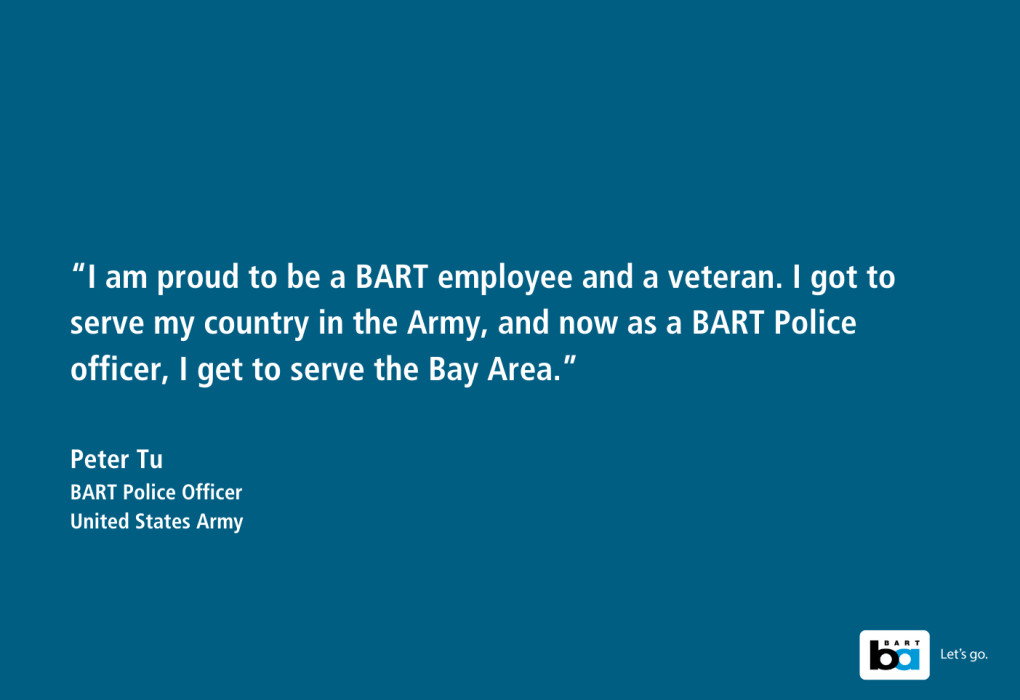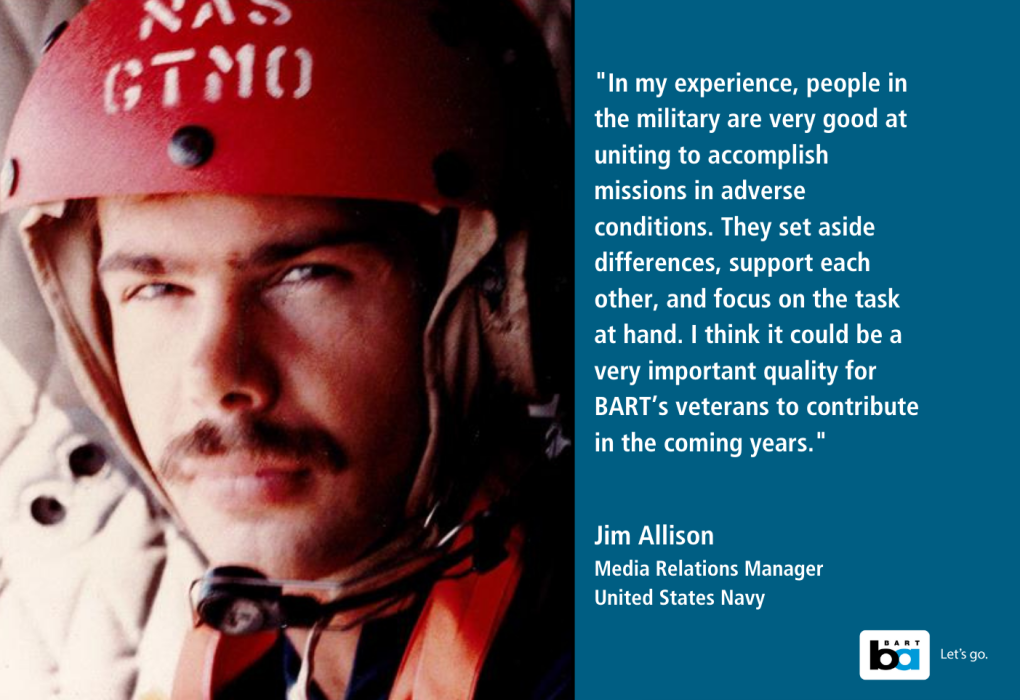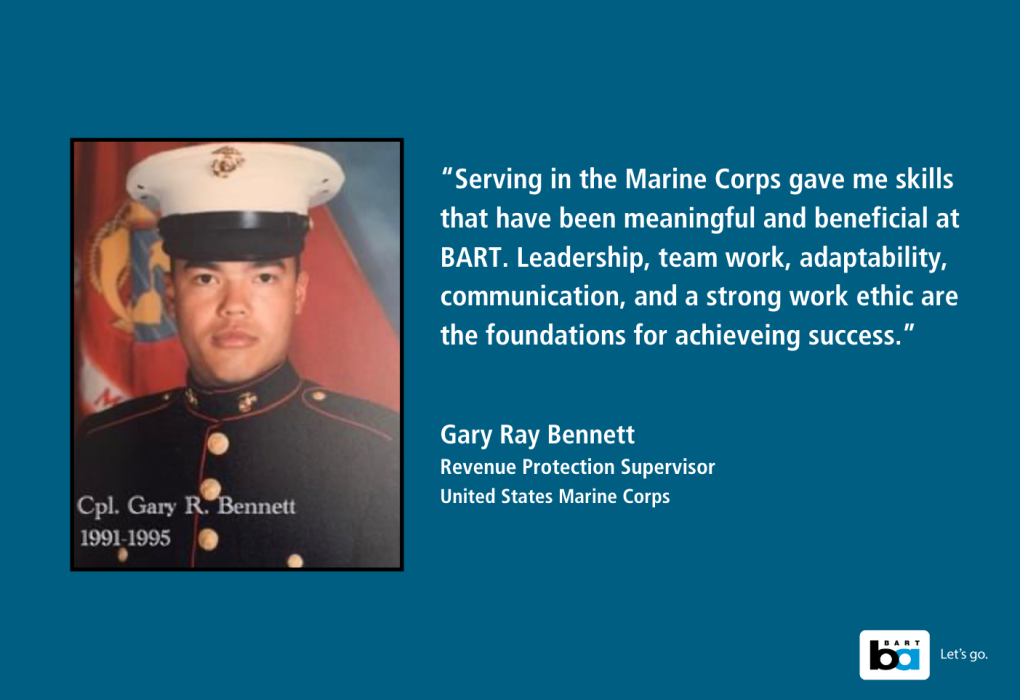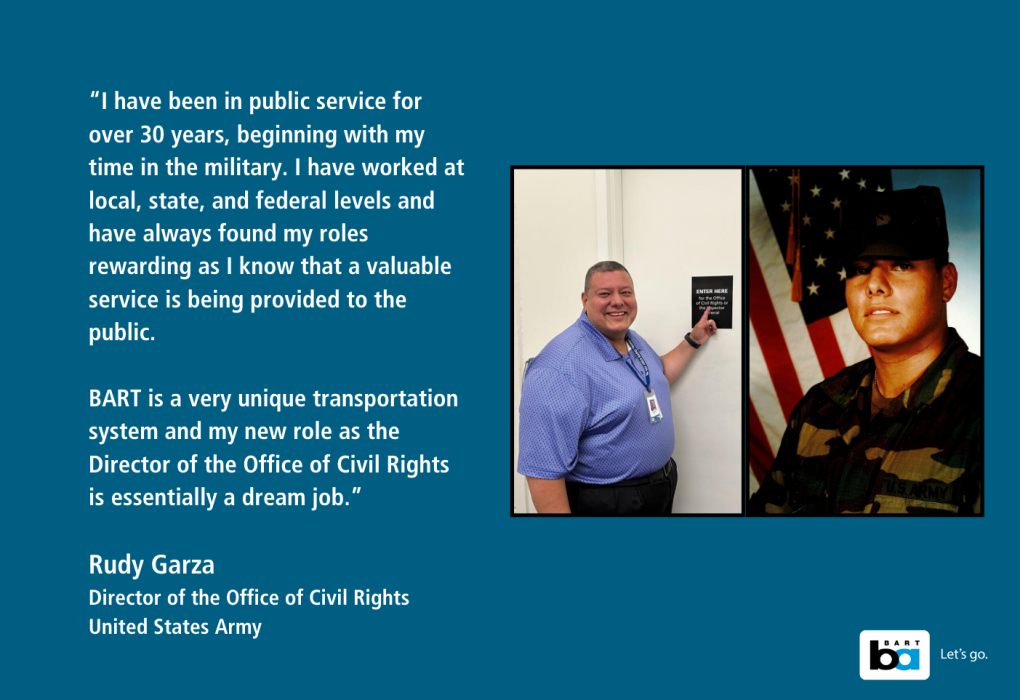Search Results
Role in the Region: BART helps keep cars off the road
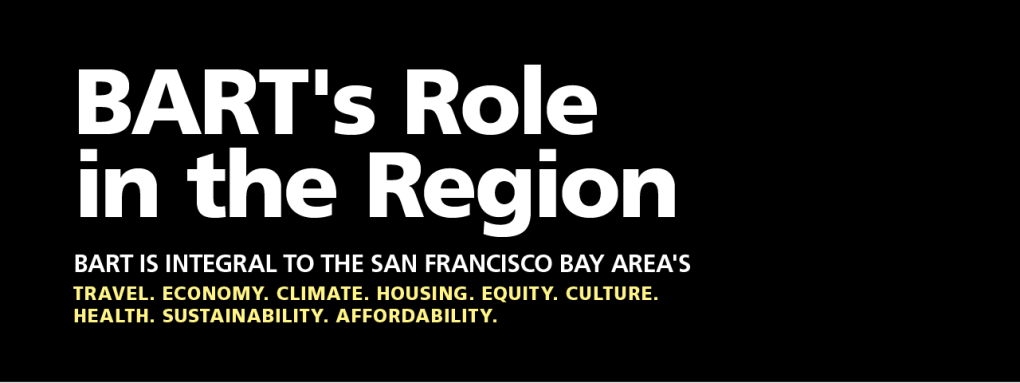
In July, BART released the Role in the Region Report, a comprehensive study of BART's impact on the Bay Area illustrated by new analyses, data visualizations, and powerful personal narratives. Over the coming weeks, we'll be sharing some of the key insights from the report in a series of Role in the Region articles here on bart.gov. Below is the first of these articles. We encourage you to read the full report - click here - and visit the project webpage at bart.gov/roleintheregion.
Today's post focuses on how BART keeps cars off the road, significantly reducing traffic congestion. See the full report for methodology.
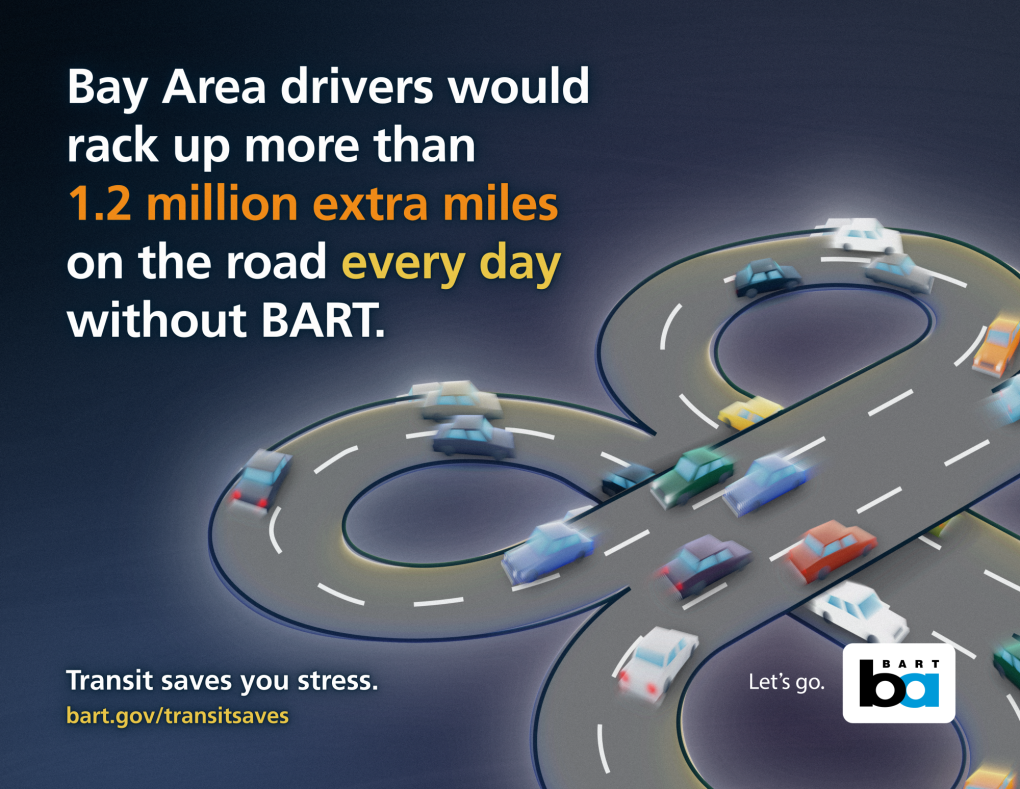
Spending hours delayed by traffic means less time spent with family and friends or for recreation, which degrades quality of life for everyone, regardless of whether they use transit. Time spent in congestion is also less productive time than working and shopping, which results in less economic activity across the region. Heavy congestion may deter people from taking trips. Since there are no viable alternatives aside from BART and driving between Eastern Contra Costa/Alameda counties and Inner East Bay/West Bay areas, increased congestion may lead to less regional mobility.
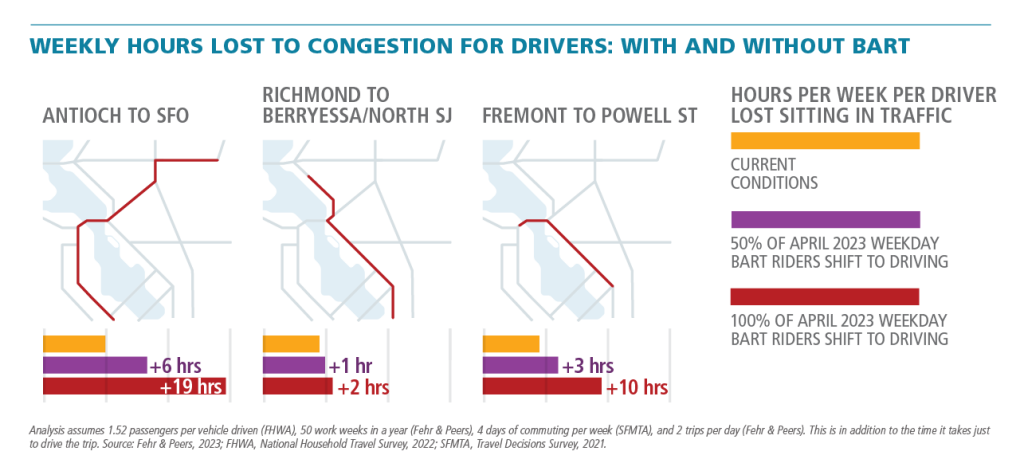
BART service even benefits residents that choose to drive, in part by significantly reducing their time lost to congestion and thereby improving quality of life for everyone who lives here, whether they use transit or not. As shown in the image above, if BART did not exist, for some trips drivers could experience upwards of 19 hours in congestion weekly, in addition to the time it would take without any traffic.
What BART Riders Say…
“When I worked, it was so nice to have downtime between work and being a busy mom. BART made it so when I got home, I was relaxed instead of stressed by traffic. It really was wonderful. Now it means I’m heading to fun!"
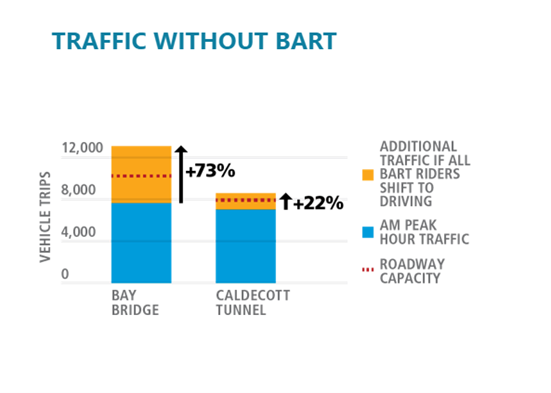
If BART ceased to exist and riders had to drive instead, traffic could increase by 73% on the Bay Bridge and 22% in the Caldecott Tunnel during morning peak commute hours, which would exceed roadway capacity. To support the increased traffic volume, up to three additional lanes would need to be added to the Bay Bridge and an additional lane in the Caldecott Tunnel.
What BART Riders Say…
“[Without BART,] we probably wouldn't go to as many activities where we'd be fighting traffic and trying to find parking.”
BART Connects
As part of the Role in the Region Report, BART solicited stories from riders to learn how our public transportation system impacts their lives. The stories are compiled at bart.gov/bartconnects.
Below, read an excerpt longtime rider Linda Healey and how BART allowed her time to relax between work and raising a child. Find the full story here.
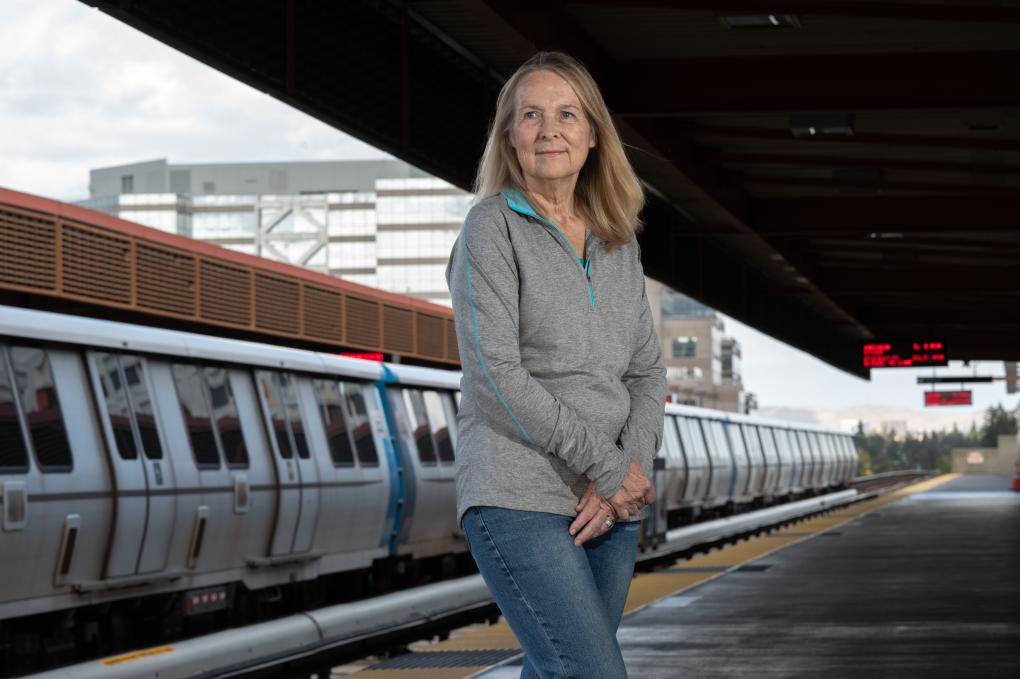
BART Connects: A working mom remembers when her only downtime each day was her BART ride
Linda Healey commuted to San Francisco from Walnut Creek for more than twenty years. When her son was young, those daily BART rides were her only downtime in the day. “BART got me home to my child quickly,” she said. “And it got me home unstressed because I could relax, rather than sit in traffic. That was a gift.” Today, Healey’s son – now in his thirties and living in Oakland – does the same commute his mother did for so many years, though he hops on the train a few stops up the line. He even works for the same company. “I passed the BART baton to him,” Healey said. “Hopefully one day, he’ll get to take it just for fun.”
Read the Story
Artwork from BART Lost and Found sent to Matthew Shepard Foundation for display
Hundreds of stray items can c ome into the BART Lost and Found office every day, and workers diligently try to reunite them with their owners. The typical process involv es tagging the item with the relevant information on when it was found, where, and by whom. Somehow, though, early this year, a piece showed
Revisit some of our favorite BART stories from 2024
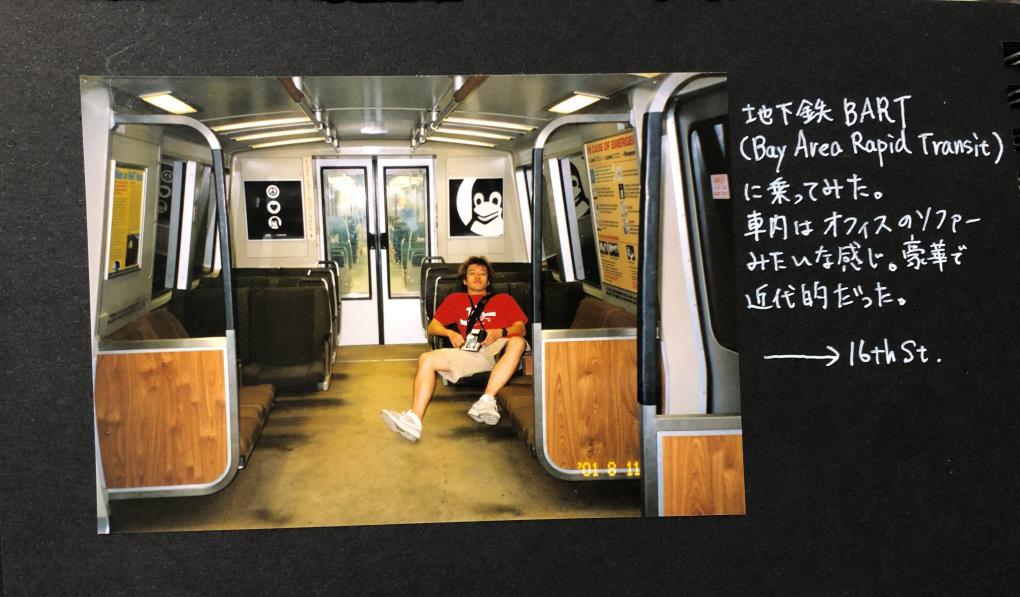
There are a million stories on BART. In 2024 we talked to riders, artists, train operators, transit fans, and more about what BART means to them. We celebrated the Transbay Tube and the Fleet of the Future.
Here are some of our favorites stories from 2024:
Bay Area history reclaimed: The story of 95-year-old artist Janet Bennett and her longstanding tile artworks at 16th and 24th St. stations

Janet Bennett’s tile murals have come to define the character of BART's Mission District stations, and yet, in the fifty-plus years since the tiles were placed, her contribution has gone unattributed...This past Women’s History Month, BART was honored to bring forward the story of the artworks as well as that of the wonderful midcentury artist who made them.
The mother of all Train Operators: BART's Mama Linda on the miles she’s traveled, the meals she’s shared, and the ancestors who shaped her
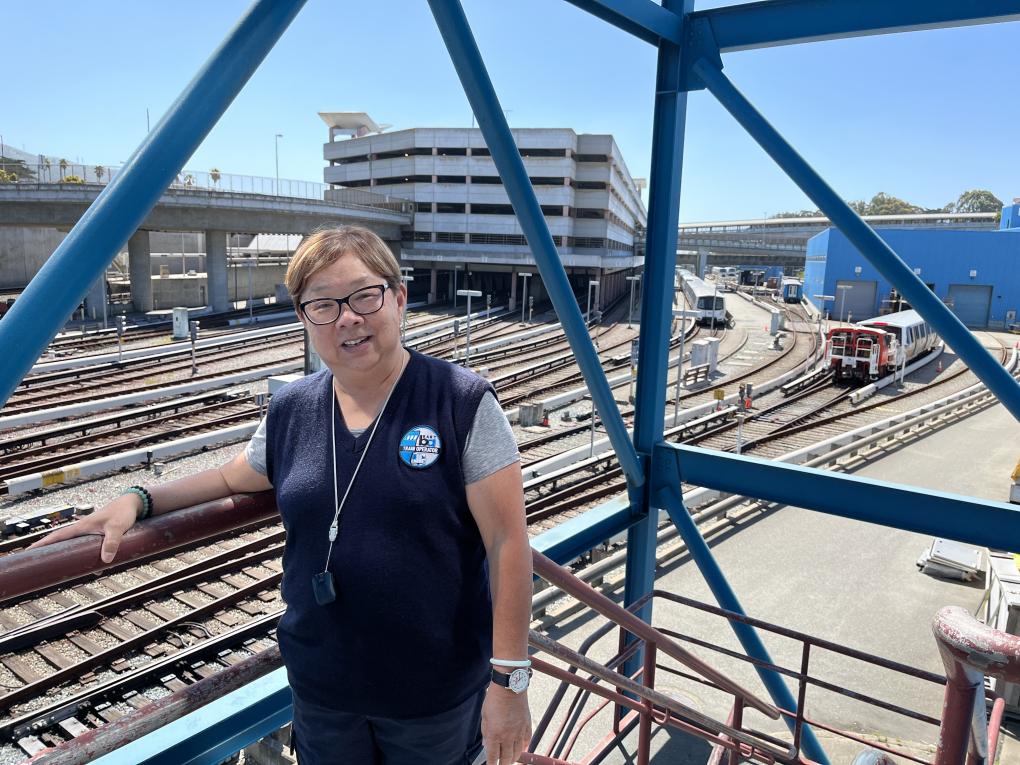
After 33 years as a Train Operator, Linda Yee-Sugaya, better known as Mama Linda, has seen a lot. She’s watched the old trains become the new; stations built and BART lines lengthen; and thousands of faces stream past the windows of her train.
An artist creates fantastical pop culture scenes with BART as her canvas and riders as her subjects
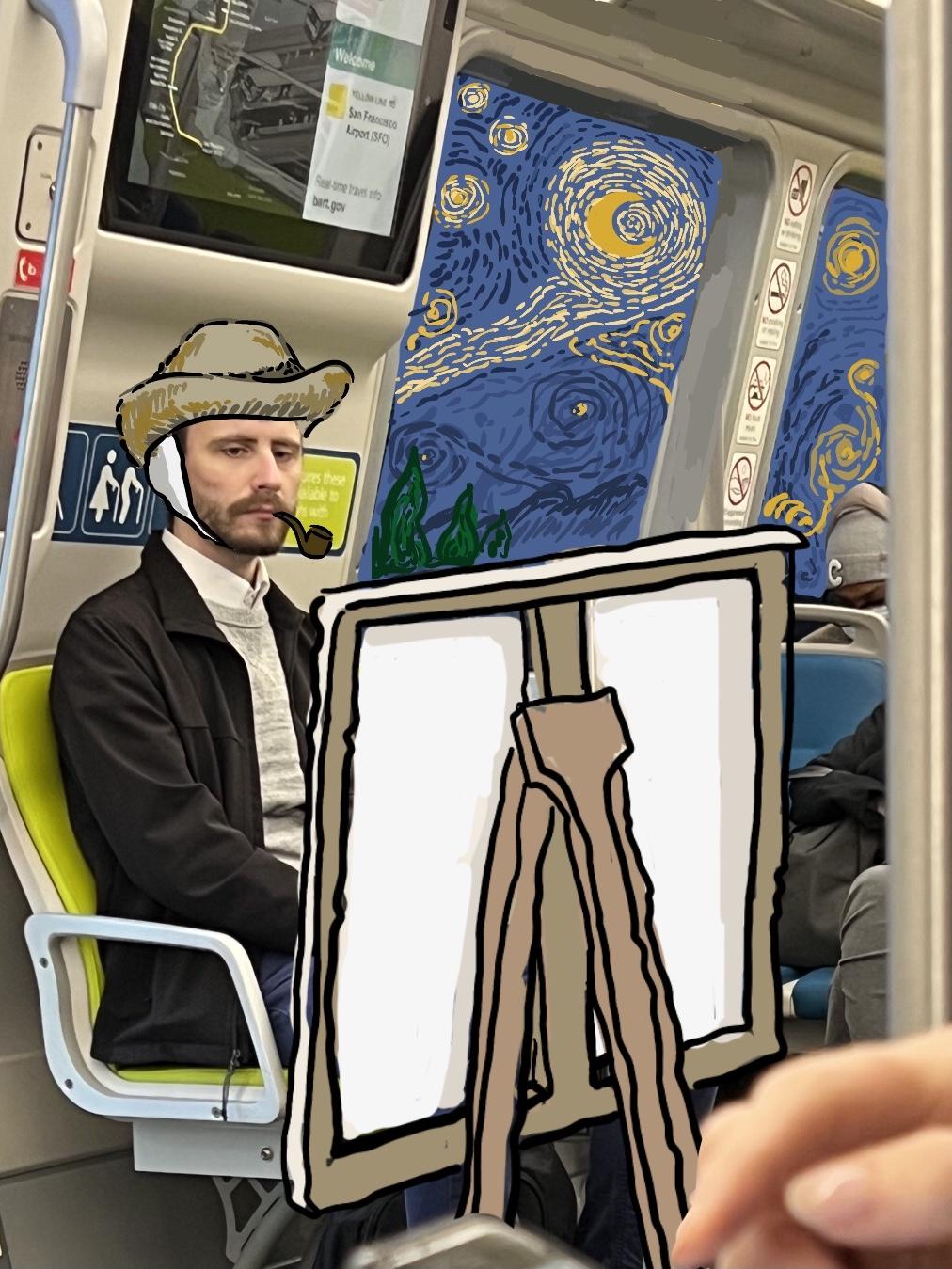
"Some people read, some people work, some people apply makeup,” says Joanna Sokua of riding BART. “I draw.”
Since 2017, Sokua has been creating what she calls “BARToons” during her morning and evening commute. You might say she is a seasoned BARTist. In the past seven years, she has drawn more than 170 BART illustrations. While on the train, she snaps photos of scenes and passengers that spark an idea, and when she gets home, she’ll sketch them out or, most often, superimpose pop culture figures onto the images using a digital pen.
The biggest BART fan in Japan flew to the Bay for a day to ride a legacy train one last time

On Friday, April 19, at 3pm, Atsushi Goto’s plane touched down at San Francisco International Airport. He hastily collected his carry on, went through customs, and dashed toward the SFO BART station. A train was waiting for him on the platform.
The 24 hours that followed his touchdown were a whirlwind of a trains, buses, cable cars, and one big party for a bunch of old trains at MacArthur Station – BART’s retirement celebration for the legacy trains. On the night of Saturday, April 20, just over a day after arriving, Atsushi was on a plane again, headed back home to Japan. Atsushi is an automobile designer, and on Monday, he had work.
BART Connects: This rider uses their BART System Map tattoo to give directions
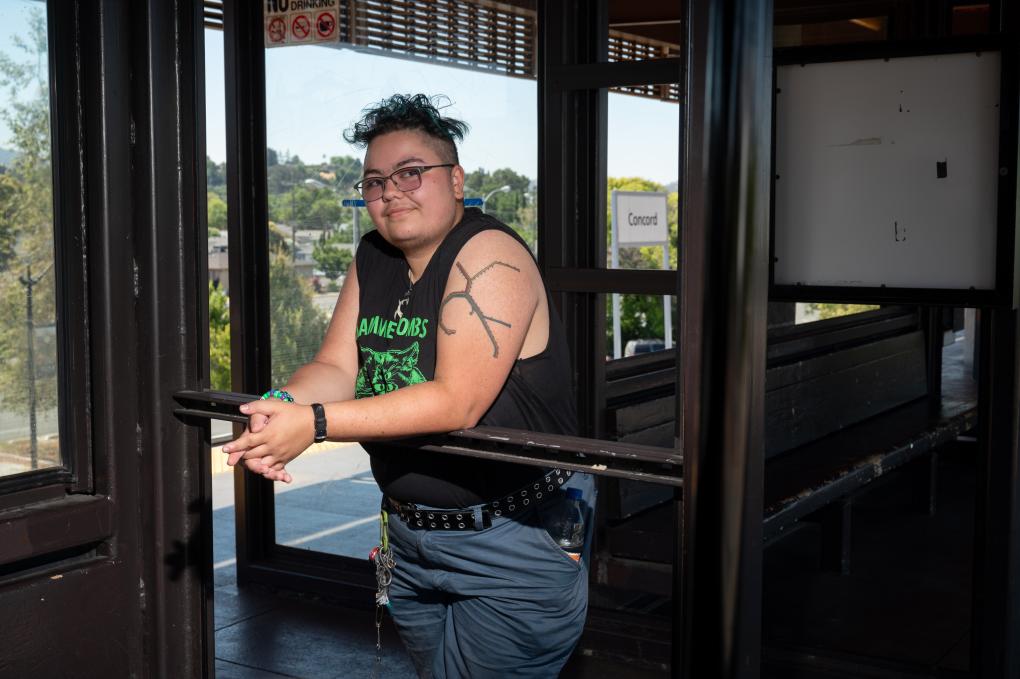
When Sam Johnson sees someone lost in a BART station, they roll up their sleeve and show them a bicep.
Etched five layers deep into the epidermis of Sam’s left arm is a tattoo of the BART System Map. It’s Sam’s first and only tattoo, and in a pinch, it comes in handy.
“I’ve helped a bunch of people figure out where to go,” Sam said. “I point to my arm and say, ‘We’re here in Concord, you’re going to transfer to this station, then ride along here, and get off at this station.’”
It’s a practical tattoo but also a piece of art, an homage to the Bay, a love letter to transit. And let’s be honest, said Sam, “It looks good on me.”
Podcast: The future is now; the journey of the Fleet of the Future from blueprint to backbone of BART’s daily service
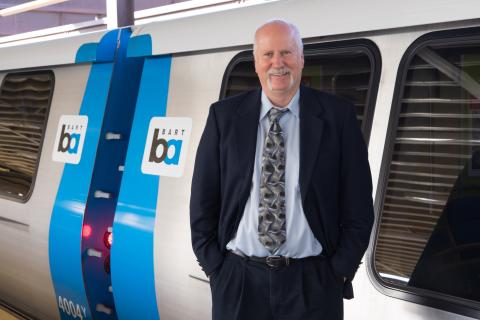
BART’s base train schedule now consists of all new Fleet of the Future trains, a major milestone for a project that’s been more than a decade in the making. Project Manager John Garnham reveals how fast the new cars speed along BART’s test track, explains why the process of building the outer shell is a bit like using a classic DIY toy and other insider nuggets on our podcast, “Hidden Tracks: Stories From BART.”
The Transbay Tube turns 50: Inside the groundbreaking history and future of the Bay's underwater crossing
On the Transbay Tube’s 50th anniversary, BART honored this one-of-a-kind structure that has ferried millions of passengers across the Bay for five decades and will continue to do so for decades to come. In the above video, we invite you to look inside the engineering opus for yourself.
BART Connects: BART showed Steve and Vanessa that "there is life out there"
July 26, 2024, marked the 34th anniversary of the Americans with Disabilities Act (ADA), which was signed into law on July 26, 1990. The ADA protects the rights of those with disabilities and is recognized as a watershed milestone for civil rights in the U.S.
More than 7% of BART riders have a disability (as self-reported in a 2022 survey), including Steven Howell and Vanessa Castro. Steven and Vanessa use BART to get just about everywhere. Says Steven: "[BART] showed me there is life out there."
Hear more from the couple in the above video.
BART Police Department Review Sub-Committee to meet on Monday, June 15
The BART Police Department Review Sub-Committee will meet on Monday, June 15, 2009, at 10:00 a.m. in the BART Board Room, which is located in the Kaiser Center 20th Street Mall, Third Floor, 344 20th St., Oakland, CA Download the draft disciplinary process document Download directions to the Board Room
BART earns high marks in review by Federal Transit Administration
A review by the Federal Transit Administration (FTA) found BART is meeting standards in nearly two dozen categories including financial management, ability to utilize federal grants, and project implementation. This latest oversight is based on the FTAs examination of a sample of BART’s award management and program implementation practices.
The FTA’s Fiscal Year (FY) 2025 Triennial Review of BART is the result of a nearly 10-month-long process that included multiple site visits to BART. The initial report found BART to be in compliance with 20 of 23 federal standards. After that initial review, BART was able to provide the FTA with corrective action responses that resulted in BART being found in compliance with all 23 standards in the final report. You can read the FTA’s final report here.
“The kind of outside review provided by the Federal Transit Administration is vital for BART to build public confidence in our operations,” said BART General Manager Bob Powers. “There’s no substitute for outside experts reviewing our procedures to reassure the public that we are being responsible with their tax dollars. We welcome this and similar reviews by outside experts.”
“The FTA has given us an exceptionally clean report,” said BART Board of Directors President Mark Foley. “This report demonstrates we are doing all we can to be financially responsible to our riders and the Bay Area.”
BART is also subject to review by an independent Office of Inspector General (OIG). The OIG conducts performance audits and investigates allegations of waste, fraud, and abuse. BART has accepted 92% of the OIG’s recommendations and already implemented 64%. BART is the only transit agency in the Bay Area with an OIG.
October 17: BART participates in Great California ShakeOut 2024
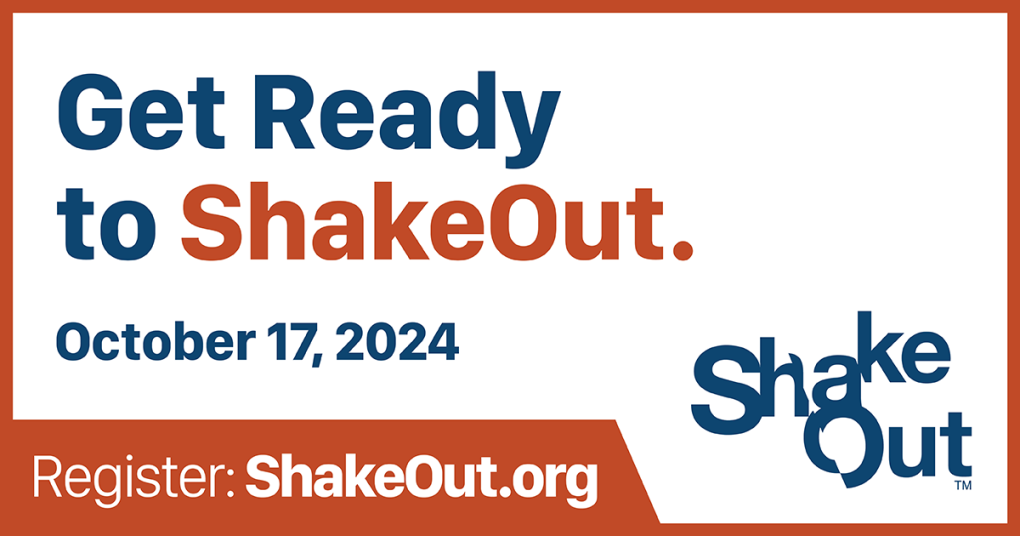
BART will participate in the 2024 International ShakeOut Day earthquake drill on Thursday, October 17, to test our emergency response systems and to help raise public awareness of the importance of having a plan and being prepared.
At 10:17am, BART staff will trigger our ShakeAlert early warning earthquake system to ensure it is functioning and working correctly. Once triggered, trains will automatically slow down to 27 mph. Then all trains will come to a very brief stop. BART will also make a systemwide public announcement encouraging riders to be prepared for earthquakes. BART will also test our internal communications systems to notify employees and the Operations Control Center will observe earthquake alarms and our train control systems to ensure they are working properly.
ShakeAlert Early Warning Earthquake System
BART is an early adopter of the ShakeAlert system, which is connected to seismic stations located throughout Northern California. When the alarm is triggered, the system sends a speed restriction command to trains. This system removes human response time and can even slow trains down before the shaking occurs depending on how far away the quake is centered.
BART to Simulate Damage Inspections
BART has added simulated damage inspections to its ShakeAlert drill. Shortly after ShakeAlert is triggered Thursday, about 60 engineers will divide into teams and fan out to all 50 stations to conduct structural assessments. The engineers will inspect walkways, support structures, elevators, escalators – anything that could sustain damage in a powerful earthquake. The simulation is designed to identify areas for improvement and to exercise “muscle memory” for BART’s earthquake response.
Emergency Response Plan
BART has an Earthquake Emergency Response Plan, and we hold several drills a year to ensure staff is trained and ready to respond. In the event of an earthquake, riders should listen for instructions from BART personnel. Employees are trained to evacuate the public from dangerous areas. Following an earthquake, BART trains are held in place (except for trains in the Transbay Tube and BART Caldecott Tunnel) until it is determined it is safe to move the train to the nearest station where riders will be offboarded.
Earthquake Safety Tips
Where will you be and what will you do when the next big earthquake hits? Taking time to consider these questions now could help if you ever do find yourself in an earthquake.
LISTEN FOR INSTRUCTIONS
That’s one reason why the first guideline in a BART emergency is to follow instructions from BART personnel. The BART Operations Control Center is in constant communication with trains and Station Agents and is in the best position to manage emergencies and provide direction for the public.
ON A TRAIN
If you’re on a train during an earthquake, Train Operators will follow BART’s established emergency plan and provide you with important information. Sit down or grab a handhold to avoid injury. If an evacuation is necessary, emergency response personnel will coordinate.
IN A STATION
If you’re in a station during an earthquake, back away from the edge of the trackway. If you’re in the station concourse, don’t proceed to the platform. Instead, prepare to evacuate the station under the direction of BART personnel.
TRY TEXTING
No matter where you are, emergency experts recommend using text messaging instead of cell calls to communicate with family and loved ones in an emergency. Cell networks can be overwhelmed if everyone’s trying to call at the same time; text messages can be more efficient.
Earthquake Safety Program Completed in 2024
In September 2024, BART completed its Earthquake Safety Program, which retrofitted vulnerable high traffic portions of the original system to make it safer in a large quake. The Earthquake Safety Program was funded in part by Measure AA, a $980 million general obligation BART bond approved by voters in 2004. The program focused on upgrading portions of the original system not only for life safety but also to ensure that we can return to operation shortly after a major earthquake.
Visit Shakeout.org for simple safety steps during earthquakes.
New train posters emphasize unruly behavior is not welcome on BART
Amid an overall decline in crime and an increase in BART PD’s visible safety presence BART is posting 400 posters inside its Fleet of the Future train cars targeting unwanted activities such as harassment, smoking, and unruly behavior. The new signs proclaim, “Unruly behavior can ruin a ride.” They back up BART’s commitment to a safe ride by emphasizing BART PD in 2024 issued 5,000 Code of Conduct citations and 16,500 fare evasion-related citations.
“These new posters are a way for us to tell our riders that we hear their concerns about safety and are enforcing the Code of Conduct,” said BART Police Chief Kevin Franklin. “The posters are helpful, but the real work in making BART safer is being done on a daily basis by both our sworn and non-sworn staff who are helping us deliver on our pledge to double our visible presence in the system.”
BART is continuing to implement its Safe and Clean Plan as it continues to welcome riders back to the system. Crime was down 17% in 2024 even as BART ridership increased by 2.6 million trips from the previous year.
BART’s commitment to rider safety includes the installation of Next Generation Fare Gates at all 50 stations by the end of this year. The new gates have already been installed at 27 stations and are making a difference in deterring fare evasion. The public is noticing the difference already with a nearly one-third decline in the number of riders who report seeing fare evasion during their trip.
Anyone who sees unruly behavior on BART can text BART PD at 510-200-0992. You can also download the free BART Watch app, which allows you to send a discreet text description of what you’re seeing along with a photo.
BART salutes our military veterans' commitment to public service
Note: There will be no change to our current weekday service on Veterans Day, Monday, Nov. 11.
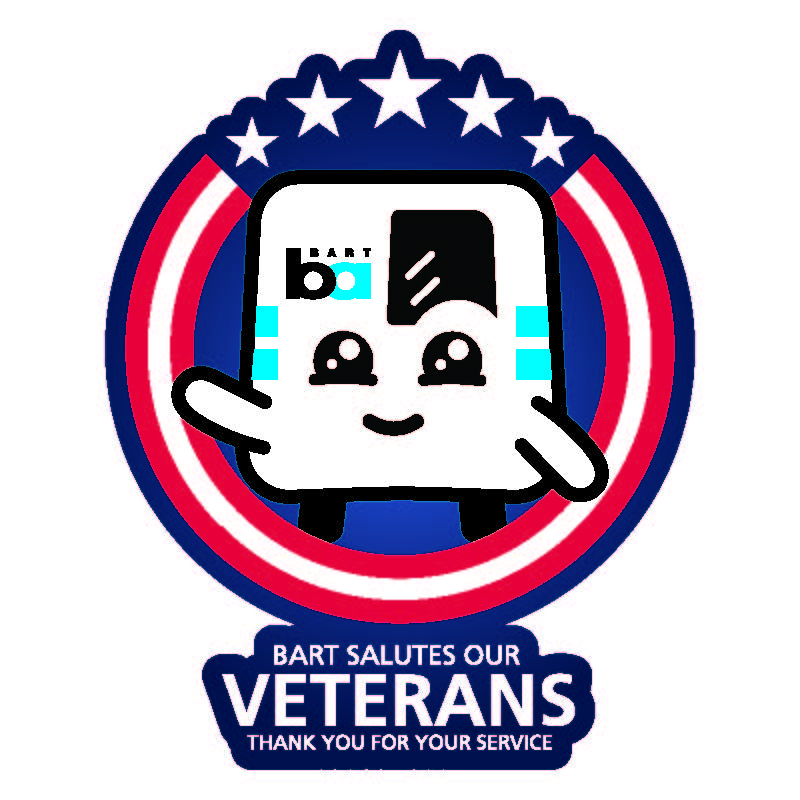
Ahead of Veterans Day, BART celebrates employees who served and acknowledges their ongoing commitment to public service.
"There are more than 200 military veterans in our BART family who each and every day contribute their experiences, values, and expertise to our organization," said General Manager Bob Powers. "We all benefit from what they bring to BART, as do our riders."
Last month, BART Communications reached out to BART veterans with a few questions: How are the lessons and skills you gained in the military reflected in your work at BART? Why did you wish to continue your public service in a different capacity? Why are you proud to be a BART employee and a veteran?
You can read their responses in the slideshows on this page. To pause on an image, left click and hold your cursor on the image.
BART salutes our nation's veterans and thanks them for their service.
Take BART and Muni to Outside Lands Music Festival 2024
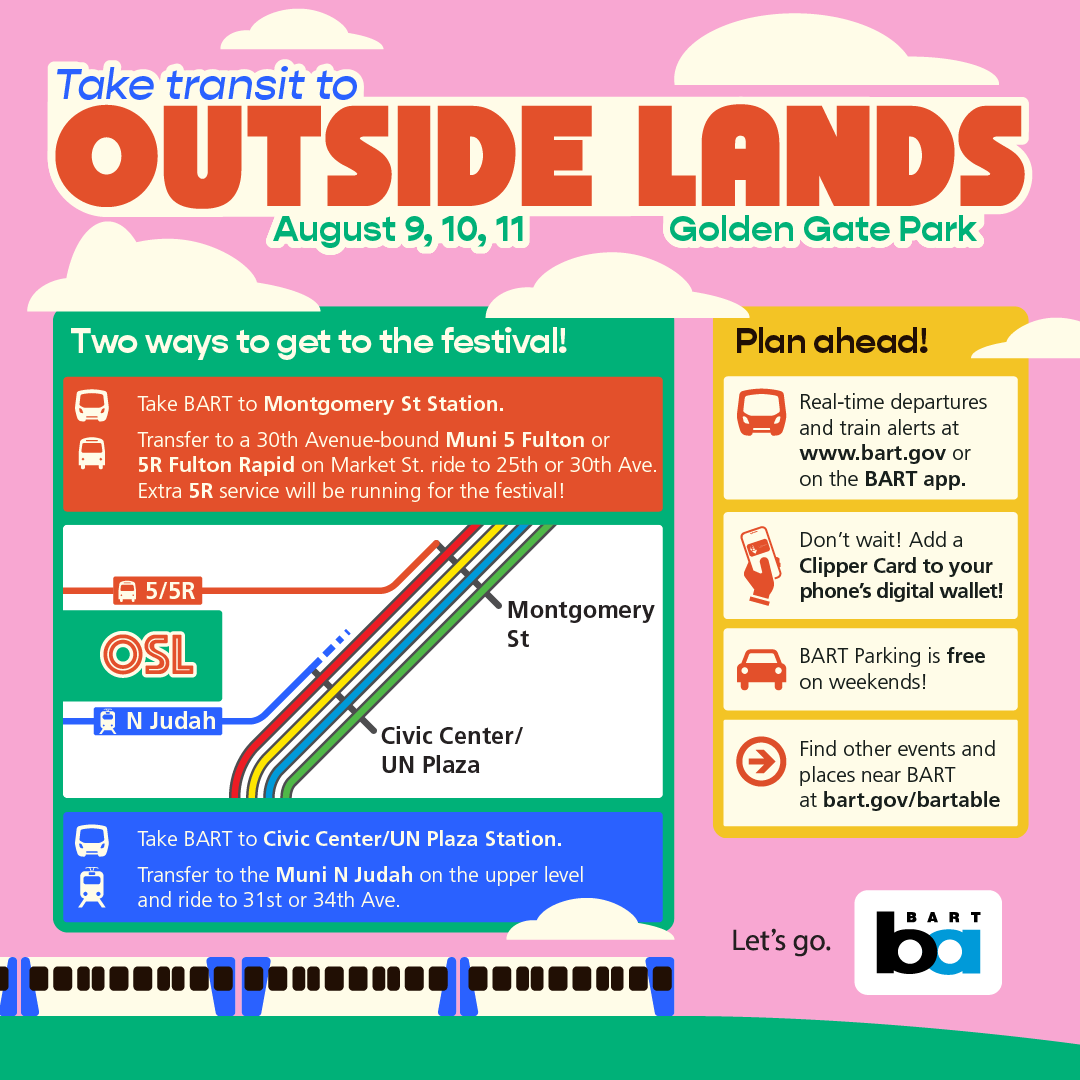
Outside Lands is the Bay Area’s biggest music festival, with thousands of people coming to experience the three-day event in San Francisco's Golden Gate Park. This year, the event will be from Friday, August 9 through Sunday, August 11.
There is no on-site parking at the festival and street parking will be extremely limited. Skip the hassle and take BART + Muni.
Use BART's Trip Planner for detailed routes and transit options.
Getting There
While BART doesn't offer direct service to Golden Gate Park, you can take BART and transfer to SF Muni or Outside Lands prepaid local shuttles to get to the event. Muni is offering extra service on the N Judah and 5R Fulton Rapid.
BART will run regular service until around midnight on each night of the festival.
From BART to Outside
Exit at Montgomery Station and take the 5R Fulton Rapid, 5 Fulton, 38R Geary Rapid or 38 Geary Bus to the Main Gate.
You can also transfer at any downtown station to the N Judah, exit at Judah/34th Ave and walk to the South Gate.
From Outside Lands Back to BART
You can head back the same way you came or catch a special direct bus service—the 5 Fulton Civic Center Express. Pick up this bus by the Outside Lands gates at Fulton/30th Ave or Fulton/25th Ave. The buses will travel non-stop to Civic Center/UN Plaza BART station for drop off.
If you are taking the Outside Lands shuttle, exit at Civic Center/UN Plaza and head to the Bill Graham Civic Auditorium across the street from the station.
For more transportation options from BART to the festival, see the travel & transport section of the Outside Lands info page.
BART Parking is free after 3 PM on Friday and is free on Saturday and Sunday except for the Milpitas and Berryessa/North San Jose stations, which are not operated by BART.
To save time and hassle, it is recommended you get a Clipper card in advance with round trip fare loaded. You can add Clipper to your mobile wallet and pay for BART fares with Google Pay and Apple Pay.
